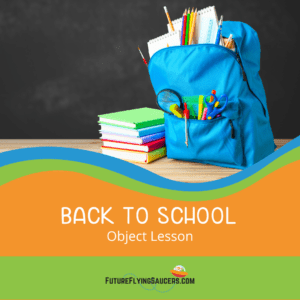Share with your friends!
“But God, I don’t teach KIDS!!”
This was my argument with God at the beginning of this ministry year. You see, we had just moved (again) overseas courtesy the US Navy, and we were still getting our bearings. I knew that there was AWANA here, and I had been in contact with the couple who had gotten the program up and running last year. I was excited about getting involved with T&T again – the 3rd-6th graders are my favorite group to work with! I love being down in the trenches with them – playing games & working on handbook sections, encouraging them & getting to know them.

And then it happened. At the planning meeting at the beginning of the year, we were brainstorming ideas for council time, which is the large group teaching time. For our AWANA program, council time is for the entire group – 3-year-olds up through 6th grade, all combined, plus our Jr. High & HS volunteers who are also going through one of the Trek studies. As the leaders were talking, I heard it – that nudge in my heart that said, “Jen, you need to take care of the teaching this year.” And that’s when my initial reaction came: “But God, I don’t teach KIDS!!“
Don’t get me wrong, I love to teach…women. God really put women’s ministry into my heart about six years ago. I love helping other women dive into the nitty-gritty of the Truth of God’s Word, to help them start to see themselves as God sees them, to help them realize that their identity is in Christ and not in what they do or what they have. But teaching kids? That’s an entirely different ballgame! I’ve been involved in KidMin since high school, but never as “the teacher.” So after a week of praying, arguing, listening, and realizing that yes, this really is what God is calling me to do this year, I stepped out in faith (waaaaay out of my comfort zone) and volunteered to lead council time. I was reminded that:
“But he said to me, “My grace is sufficient for you, for my power is made perfect in weakness.” Therefore I will boast all the more gladly of my weaknesses, so that the power of Christ may rest upon me.”” (2 Corinthians 12:9 ESV)
I definitely had some lessons flop over the past year – either they were too complicated for the preschool-aged Cubbies or too basic for the older elementary T&Ters; I also had some lessons that engaged everyone and left them excited about learning more! I used the basic outline of the Drawing Through The Bible lessons from this Future Flying Saucers blog (thank you for this awesome resource!), and everyone definitely learned something this year, including me.
As we were talking about the Old Testament, I added in a lesson about the Tabernacle. This probably ended up being the favorite lesson from this past year because it engaged everyone, including the leaders! We created a scale model of the tabernacle in our fellowship hall, outlining the courtyard and tabernacle walls with rope. I made scale models of the altars, table, lampstand, and Ark of the Covenant as well. The kids and leaders helped hold up the rope as the “posts”. This lesson really helped me learn how to keep everyone engaged.

Practical Tips for Teaching Mixed-Age Groups
So, based on my experiences over the past year, here is what I have to offer on teaching a multi-age group of kids:
1) Have an objective for each age group. It can be tricky to keep everyone engaged when the kids range from 3-12 (or even 18). For the tabernacle lesson, my objective for the Cubbies was that they got a visual picture of how the tabernacle was arranged. For the Sparks (early elementary), my objective was that they could name all of the parts of the tabernacle. For the T&Ters (and teens), it was that they gained an understanding of how everything in the tabernacle pointed to Jesus. For the adults, my objective was that they learned one new thing.
2) Involve the kids! Kids of all ages love to help with a lesson. They don’t need to be physically involved every week, but when you are asking questions make sure to direct questions to each age group, and call on a child from your target age group to answer the question. Using the tabernacle lesson, a Cubbie could answer a question about how many walls the courtyard had. A Spark could answer a question about the name and use of a specific item in the tabernacle. A T&Ter could tell you how a specific item is related to Jesus Christ. The questions that you ask each age group should be related to your lesson objective for that age group.
3) Review, review, review. As we moved through each week, I always started with a review of the lesson from the previous week or two. This helped all of the kids remember where we were and how the different lessons related to each other. It also helped them see the bigger picture of the story of God’s Word.
4) Don’t forget about your leaders! This is important for two reasons: 1) The kids know and love their leaders. When you involved the leaders in your lesson, the kids are going to pay attention to see what happens. 2) Leaders can learn, too! Who knows – you might be sharing something that week that they have never heard. Plus, when the leaders are listening and engaged, the kids are more likely to follow their lead.
Teaching kids can be challenging. Teaching a group of kids with a wide range of ages can be downright frightening! Hopefully these four tips will help make the experience a little easier for everyone.

Jenn’s Favorite KidMin Items can be seen below:
Save
Save
Save
Save
Save
Save
Save
Save










